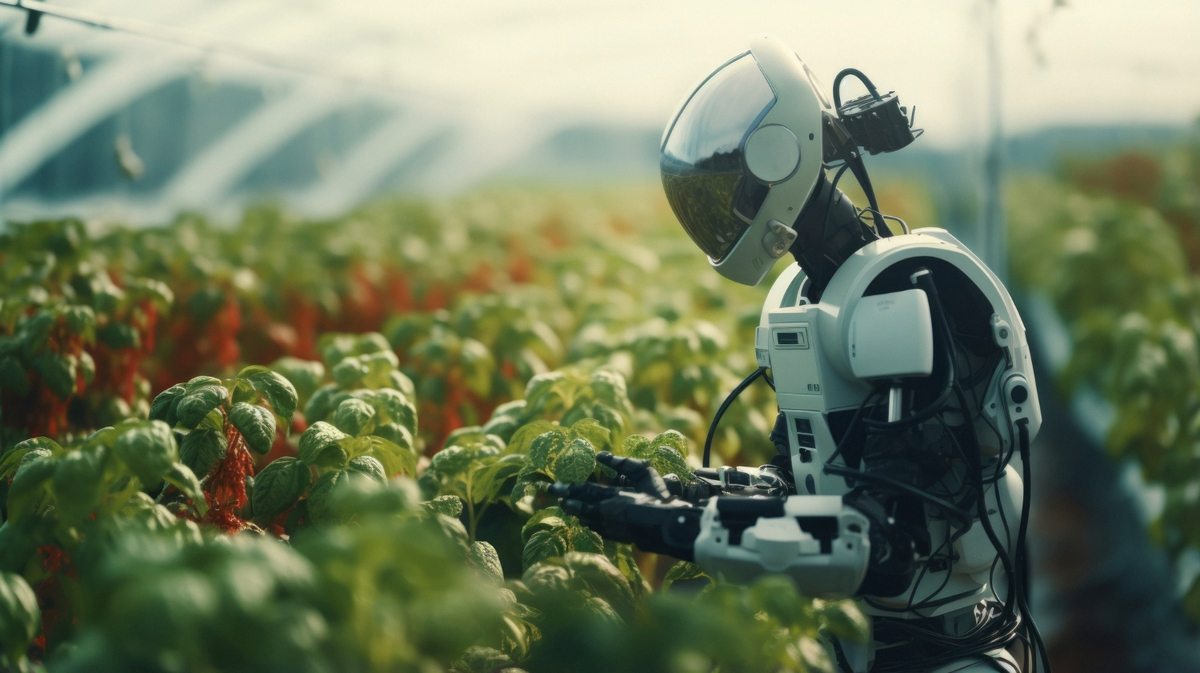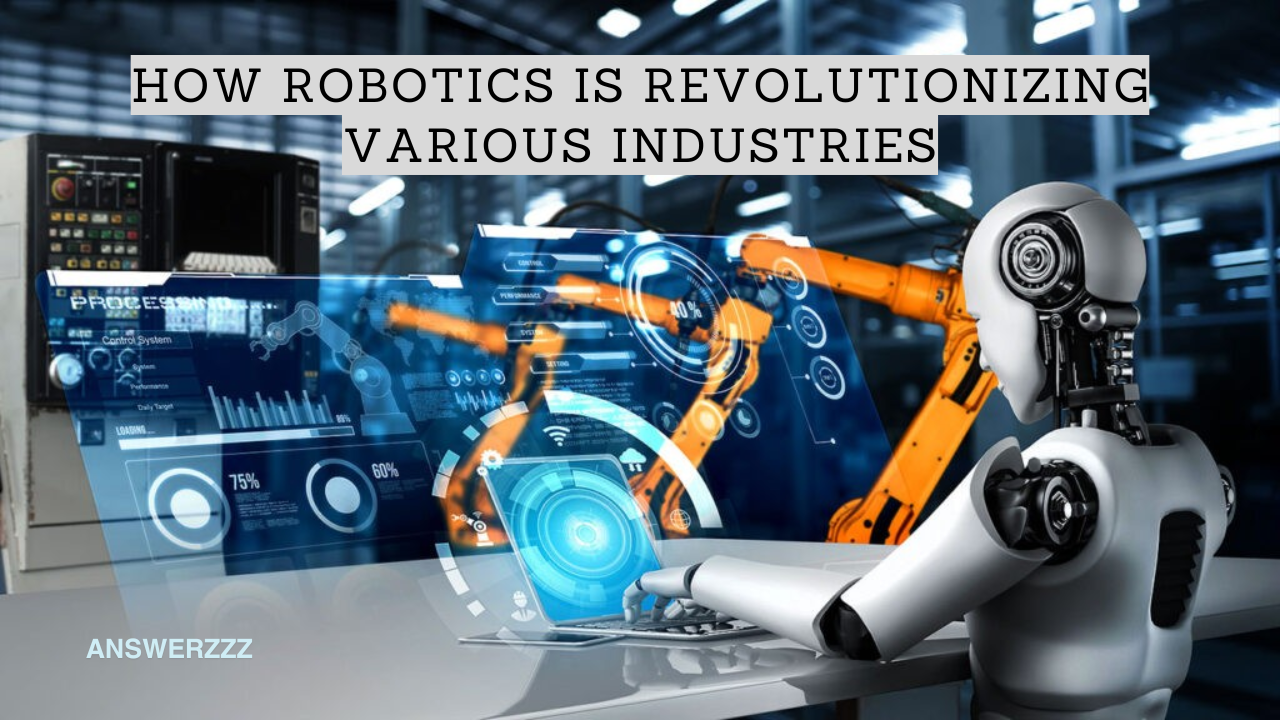The integration of robotics into various industries is not merely a trend; it represents a fundamental shift in how businesses operate. With advancements in artificial intelligence (AI), machine learning, and robotics technology, industries are experiencing unprecedented changes in efficiency, safety, and productivity. This article explores the transformative impact of robotics across multiple sectors, including manufacturing, healthcare, agriculture, logistics, and more.
1. Robotics in Manufacturing

1.1 Increased Efficiency and Productivity
Manufacturing was one of the first industries to embrace robotics. Automated systems and robots have been deployed to perform repetitive tasks, such as assembly line work, welding, and painting. These machines can work tirelessly, resulting in significant productivity increases. According to a report by the International Federation of Robotics (IFR), global robot installations in manufacturing increased by 12% in 2020, reflecting the growing reliance on automation to enhance production processes.
1.2 Quality Control and Precision
Robotic systems are equipped with advanced sensors and cameras that allow for precise quality control. By detecting defects during the production process, robotics help minimize waste and ensure that only high-quality products reach consumers. This level of precision is particularly crucial in industries like automotive manufacturing, where even minor defects can lead to significant safety issues.
1.3 Flexible Manufacturing Systems
Modern robotics also enables flexible manufacturing systems (FMS). These systems can quickly adapt to changes in product design and volume, allowing manufacturers to respond to market demands efficiently. Robots can be reprogrammed for different tasks, reducing downtime and making it easier for companies to introduce new products.
2. Robotics in Healthcare
2.1 Surgical Robots
One of the most notable advancements in healthcare robotics is the development of surgical robots. These machines assist surgeons in performing complex procedures with greater accuracy and minimal invasiveness. For example, the da Vinci Surgical System allows surgeons to control robotic arms with precision, resulting in smaller incisions, reduced pain, and quicker recovery times for patients. Studies have shown that robotic-assisted surgeries can lead to shorter hospital stays and fewer complications.
2.2 Robotic Exoskeletons
Robotic exoskeletons are becoming increasingly popular for rehabilitation and mobility assistance. These wearable devices can help patients with mobility impairments regain their ability to walk. By providing support and assistance, exoskeletons enhance rehabilitation efforts and improve the quality of life for individuals with disabilities.
2.3 Automation in Laboratories
Robots are also revolutionizing laboratory operations. Automated systems can perform repetitive tasks such as sample analysis, testing, and data collection, freeing up researchers to focus on more complex analyses. This automation not only increases efficiency but also reduces the potential for human error, leading to more accurate results.
3. Robotics in Agriculture

3.1 Precision Agriculture
In agriculture, robotics is driving the concept of precision farming. Autonomous drones and ground robots are used to monitor crop health, soil conditions, and water usage. These machines collect data and provide farmers with actionable insights, allowing them to make informed decisions about resource allocation. This not only increases yield but also minimizes waste, contributing to more sustainable farming practices.
3.2 Harvesting Robots
Harvesting robots are becoming essential in addressing labour shortages in agriculture. These machines can pick fruits and vegetables with minimal damage, improving efficiency and reducing labour costs. For example, companies like Harvest CROO Robotics have developed strawberry-picking robots that can autonomously navigate fields and harvest ripe berries.
3.3 Pest and Weed Control
Robotic systems equipped with advanced imaging technologies can identify and target specific pests and weeds. By applying pesticides and herbicides only where needed, farmers can reduce chemical usage and lower costs while minimizing environmental impact.
4. Robotics in Logistics and Supply Chain
4.1 Warehouse Automation
The logistics industry is experiencing a significant transformation due to robotics. Automated guided vehicles (AGVs) and autonomous mobile robots (AMRs) are being used to transport goods within warehouses. These robots can navigate complex environments, optimizing the flow of materials and reducing the time required for order fulfilment.
4.2 Sorting and Packing
Robotic systems equipped with AI can sort and pack products with high precision. For instance, Amazon employs Kiva robots to move shelves of products to human workers, streamlining the picking and packing process. This automation allows companies to process orders faster, improving customer satisfaction.
4.3 Last-Mile Delivery
The rise of e-commerce has led to innovations in last-mile delivery. Drones and delivery robots are being tested for transporting goods directly to consumers’ doorsteps. Companies like Starship Technologies are developing small autonomous robots that can navigate sidewalks and deliver groceries and packages, enhancing convenience for customers.
The Benefits and Challenges of Integrating AI into Everyday Life
5. Robotics in Construction
5.1 Automated Machinery
In the construction industry, robotics is revolutionizing how projects are executed. Automated machinery, such as robotic arms and drones, can perform tasks like bricklaying, concrete pouring, and surveying. These technologies increase efficiency and reduce labour costs, allowing for faster project completion.
5.2 3D Printing
Robotic 3D printing is gaining traction in construction, enabling the creation of complex structures with minimal material waste. Companies like ICON have developed 3D printers that can construct affordable housing in a fraction of the time and cost compared to traditional methods.
5.3 Safety Enhancements
Robots are also being used to enhance safety on construction sites. Drones can monitor job sites for hazards and provide real-time feedback, allowing for proactive safety measures. Additionally, robotic exoskeletons can assist workers in lifting heavy materials, reducing the risk of injuries.
6. Robotics in Retail

6.1 Inventory Management
In retail, robotics is improving inventory management through automation. Robots equipped with RFID technology can scan shelves and track inventory levels in real time, ensuring that stock levels are always optimal. This reduces the likelihood of stockouts and improves the overall shopping experience.
6.2 Customer Service Robots
Robots are also making their way into customer service roles within retail environments. Companies like Lowe’s have deployed robotic assistants to help customers locate products and provide information. These robots enhance the shopping experience while freeing up employees to focus on more complex customer needs.
6.3 Automated Checkout
Automated checkout systems are revolutionizing how consumers pay for their purchases. Self-service kiosks and mobile payment systems allow customers to check out without the need for human cashiers. This reduces wait times and improves the overall efficiency of the retail process.
7. Robotics in Education
7.1 Teaching Tools
Robotics is becoming an integral part of education, especially in STEM (science, technology, engineering, and mathematics) fields. Educational robots can engage students in hands-on learning experiences, making complex concepts more accessible. Programs like FIRST Robotics encourage teamwork and problem-solving skills among students.
7.2 Personalized Learning
AI-driven robotic systems can also provide personalized learning experiences. Adaptive learning platforms use data to tailor educational content to individual student’s needs, helping them progress at their own pace. This approach has the potential to improve learning outcomes significantly.
7.3 Enhancing Engagement
Robots can enhance student engagement by making learning interactive and enjoyable. For instance, humanoid robots can assist teachers in the classroom, providing additional support and motivation for students. This innovative approach fosters a more dynamic learning environment.
8. Challenges and Considerations
8.1 Job Displacement
While robotics brings numerous benefits, it also raises concerns about job displacement. As machines take over tasks traditionally performed by humans, there is a growing fear of widespread unemployment. Policymakers and businesses need to address these concerns through retraining programs and support for affected workers.
8.2 Ethical Considerations
The deployment of robotics also raises ethical questions. For instance, in healthcare, the use of robots in surgery must be carefully regulated to ensure patient safety. Additionally, issues surrounding data privacy and security must be addressed, especially as robots become more integrated into daily life.
8.3 High Initial Investment
Implementing robotic systems can require substantial initial investment. Many small and medium-sized enterprises (SMEs) may find it challenging to adopt these technologies due to budget constraints. However, as robotics technology continues to advance and become more affordable, it is expected that adoption rates will increase.

Robotics is revolutionizing various industries by enhancing efficiency, precision, and safety. From manufacturing to healthcare, agriculture to logistics, the impact of robotics is far-reaching and transformative. While challenges remain, the potential for innovation and improvement is immense. As industries continue to adopt robotic technologies, we can expect to see even more significant advancements in the future, ultimately reshaping the way we work and live. The successful integration of robotics will require collaboration among businesses, policymakers, and educators to ensure a future where humans and machines work together harmoniously.



